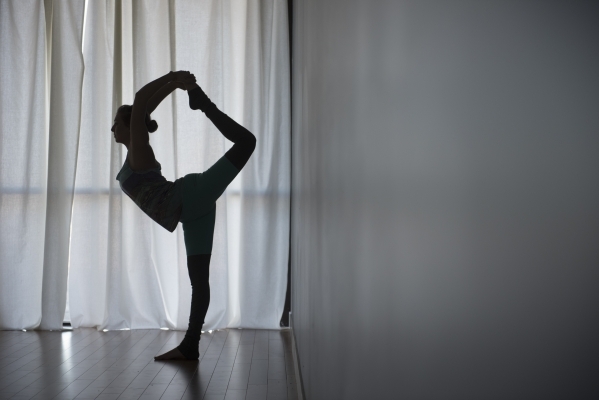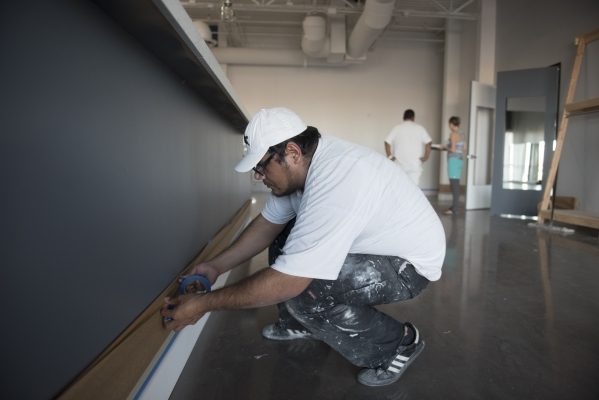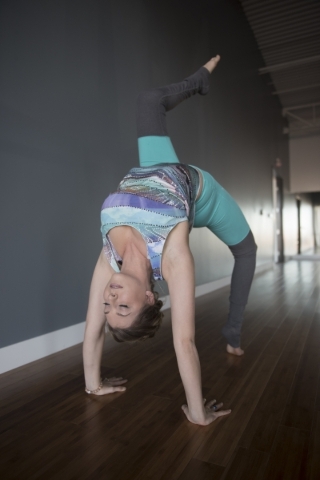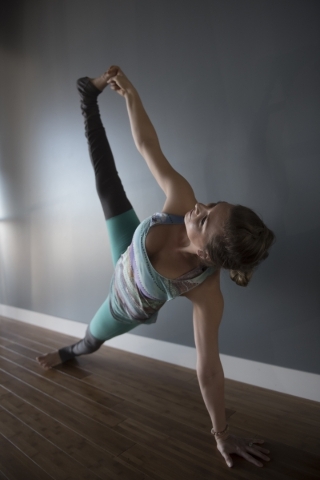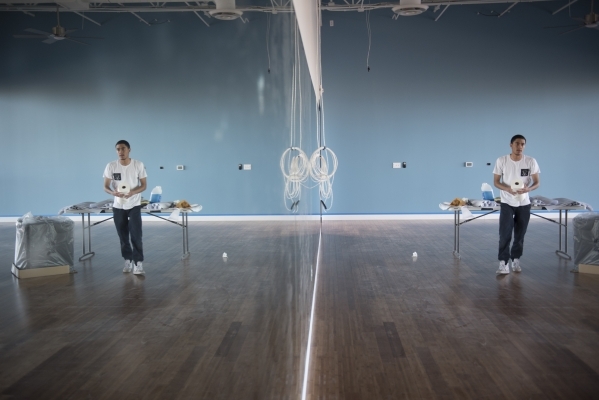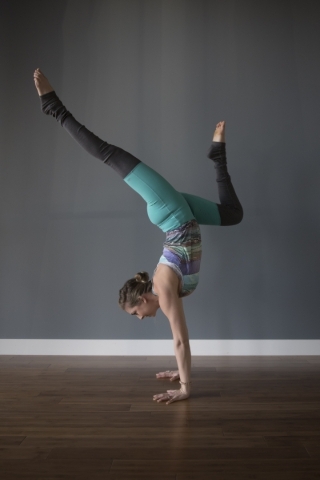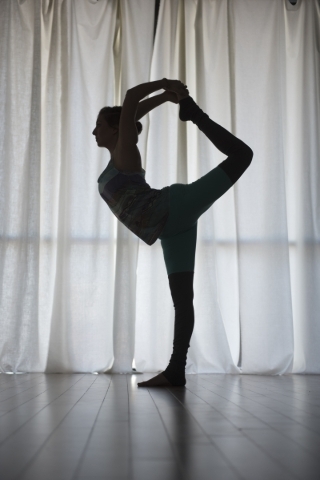Hot or not: Yoga classes keep turning up the heat
In order to experience yoga's rejuvenating benefits, a class does not need to be conducted in a hot room. But today, it's not uncommon to see yoga studio room temperatures in the 90s, some even in the 100s. Most experts agree that warmer temperatures are better for stretching muscles, but skeptics will argue some classes may be pushing the boundaries of safety. A few yoga experts recently weighed in on the "hot" topic.
Bikram and heat
Bikram yoga's popularity raced in the 1990s and early 2000s. Today's yoga studios and instructors are distancing themselves from the Bikram name, largely because of a scandal tied to its founder. Most yoga instructors do however agree that a hot room became a dominant part of the yoga conversation as Bikram's popularity grew. With Bikram, heat is just as important as the 26 unique circulation-boosting poses.
Sharon Jalene, a lecturer in UNLV's kinesiology department and longtime Bikram instructor, recalls her certification classes emphasizing a 105-degree room at 40 percent humidity. "But like many things, people start tweaking and going in their own direction. Unfortunately, you might see some rooms at 110 or more, along with high humidity. That's unfortunate, because that becomes more about surviving the heat as opposed to practicing yoga," she added.
Luke Hoffman, founder of Evolution Yoga in Henderson, says a 90- to 95-degree room is perfect. "I think you can get a better quality workout," he notes, "and you don't feel tired and worn out. … But in America, we can take things to extremes. It really can put yoga in a negative light."
Hoffman says he does feel his muscles loosen up faster in a warmer room. However, with cooler temperatures the body creates its own heat, he adds, and it forces the muscles to work harder.
Kristina Blunt, founder of the Vegas Gone Yoga festival, is a former Broadway dancer who gravitated toward yoga as a way to stretch before performances. Today, Blunt teaches at Yoga Sanctuary, in Las Vegas, but does not teach hot yoga classes, specifically. She says, personally, she prefers taking classes in a hot room in the upper 90s.
"Sometimes when I go to a nonheated class, I might feel a little perspiration. … I want more than that. I believe it helps release toxins and I feel like this is my purification hour," she says.
Heat and health
So, what benefit does a heated room really bring? At this point, Jalene says the health benefits of hot yoga are "quite understudied." Instead, most academic research "brings more of a cautionary physician stance on exertional heat illness," she said.
But a few small studies have linked yoga and exercise in warm environments to increased blood plasma volume, better circulation to the skin and increased endorphins, Jalene noted, among other benefits.
One small 2013 University of Texas study followed 15 older obese adults who completed an eight-week Bikram yoga class, three times per week. It found that short-term Bikram yoga did "improve glucose tolerance in older obese" patients.
A 2010 study at USC's Keck School of Medicine followed 14 pre-menopausal women who participated in a Bikram class at least three times a week for three years. The study concluded that the group's bone mineral density was "generally above the mean BMD" for women of comparable age.
Beyond the small sampling of studies, Jalene has seen and heard plenty of anecdotes from those who have experienced positive health changes when practicing hot yoga.
"There are a lot of things said that can't yet be verified scientifically. But having been in the hot rooms for many years, it seems to have an effect on blood pressure. I've also seen hundreds of students where, after time, their cholesterol balances out," she explained.
Jalene also said it takes between 10 and 14 exposures to a hot room for the body to naturally acclimate to the environment. In addition, those with a higher body mass index, also called BMI, or extra body weight, will feel the effects of the heat faster and should expect to take more breaks and monitor their exertion level early on, she warned.
Different styles
The history of yoga, some say, dates as far back as 3000 B.C. Yoga instructors embrace a variety of styles, and hearing the many different names can be confusing. But here's a brief rundown on some of the basic styles.
Hatha is considered a basic and even "classical" style whose poses are found in Bikram and Vinyasa yoga, among many others. Vinyasa (also called "flow") includes many hatha poses, but focuses on each move transitioning smoothly to the next. Ashtanga, another popular style, focuses on each move being linked to a breath.
The term "hot yoga" tends to be synonymous with Bikram in yoga circles, but its poses may vary from the Bikram 26-pose routine. Iyengar focuses on creating perfect alignment in a pose. Instructors may even use props to help participants with poses.
Regardless of the style, Jalene says that yoga, in general, works with natural movements but adds longer isometric contractions to specifically target muscles and maximize blood flow to them; it also gently trains the core. "It's something you don't find in running or weightlifting."
Blunt encourages participants to not get too caught up in perfecting poses, but to instead use yoga as an opportunity to separate the mind from daily activities and enjoy the rejuvenating feeling that can come from doing this.
"I do feel that sometimes with the concern about health and body image, sometimes you get stuck on poses and getting them right. Then you go to yoga class and there's no mention of meditation or breath work," Blunt added.
Tips before taking a yoga class
If you're new to yoga, instructors Jalene and Blunt offer the following tips before you get started.
• Ask questions: Ask the staff and manager questions about different instructors and their styles.
• Wear proper clothing: Wear thin clothing (and less of it), especially if the room is hot.
• Hydration: Come to class well-hydrated and avoid drinking coffee or other diuretics beforehand.
• Chronic/other conditions: If you have a chronic illness such as diabetes or are pregnant, check with your physician before starting a yoga practice.
• Change it up: Try different instructors, says Blunt, and avoid ones that pressure you to stay in the room, even if you feel sick or uncomfortable, adds Jalene.
• Be realistic: Often people think they are more advanced than they really are, Blunt notes. Start with a beginner's class. Period.




